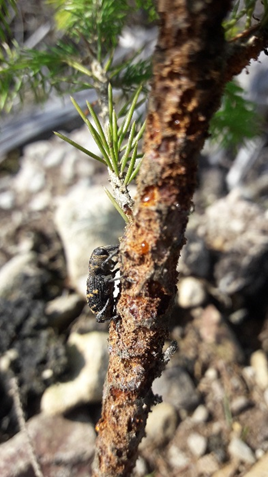SWL plays key role in tackling forestry pest
Scottish Woodlands is playing a central role in a conference designed to identify a sustainable way of controlling one of the UK's most damaging forestry pests.
Hylobius abietis, the large pine weevil, is a major problem for the industry, particularly to the restocking of felled areas with conifers. Estimates suggest large pine weevil attacks cost UK forestry at least £7 million each year.
The weevil has a voracious appetite for young conifer trees but can also kill young broadleaves. Just one weevil can kill an unprotected tree by stripping the bark around the stem.

For the last five years, the industry has been working together to find a sustainable pest management system which does not rely on pesticides.
The conference - at Birnam Arts Centre, near Dunkeld, Perthshire, on 7th April - will update delegates on all aspects of the Hylobius Industry Research Programme (HIRP).
Stuart Wilkie, Scottish Woodlands Environment and Certification Manager, will introduce the conference and also speak about the FSC (Forestry Stewardship Council) Pesticide Policy.
Other speakers include Josh Roberts of Forestry & Land Scotland, Katy Dainton and Dr Roger Moore from Forest Research, Cat Kent from Tilhill Forestry and Confor's Pesticides Adviser Colin Palmer.
Amanda Bryan of the Scottish Forestry Trust will update on the Trust's work to raise funds to continue research in this area.
Stuart Wilkie said: "It's really important that the forestry industry continues to work together closely to identify a sustainable solution to tackle this damaging pest. This is a significant event, discussing an issue that has bedevilled the industry, and Scottish Woodlands is committed to playing a central part in making further progress."
Tickets for the event, which runs from 930am-230pm, cost just £20 with lunch provided - but places are limited to 70. Book tickets here - and read the full programme here